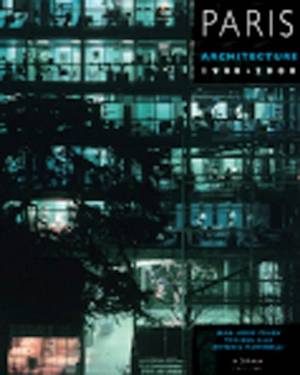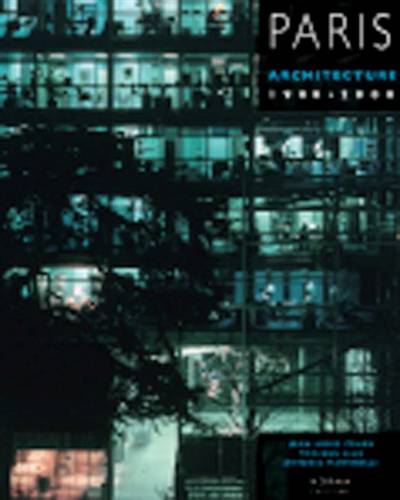
- Retrait gratuit dans votre magasin Club
- 7.000.000 titres dans notre catalogue
- Payer en toute sécurité
- Toujours un magasin près de chez vous
- Retrait gratuit dans votre magasin Club
- 7.000.0000 titres dans notre catalogue
- Payer en toute sécurité
- Toujours un magasin près de chez vous
Paris, architecture, 1900-2000
Architecture 1900-2000
Jean-Louis Cohen, Monique Eleb, Antonio MartinelliDescription
Avec cet ouvrage, Jean-Louis Cohen, architecte et historien, et Monique Eleb, psychologue et sociologue, proposent une promenade architecturale dans le Paris intra-muros et sa proche banlieue. Trente-trois bâtiments photographiés par Antonio Martinelli sont visités parm la multitude de réalisations qui ont marqué le XXe siècle. Ils ont été choisis en fonction de leur contribution au paysage urbain, de leur force esthétique et de leur rôle dans la transformation des modes de vie.
Des architectes du début du siècle à qui les découvertes techniques ont permis de se libérer des conventions à la génération actuelle qui a retrouvé une dimension intellectuelle après la crise architecturale des années 1960-1970, on suit dans le Paris d'aujourd'hui les transformations d'identité d'une ville dont le centre dense est enserré dans une agglomération de plus de dix millions d'habitants.
Par la succession et la mise en correspondance d'édifices en apparence étrangers les uns aux autres des ossatures de béton des frères Perret aux prismes transparents de Jean Nouvel. Jean-Louis Cohen et Monique Eleb révèlent combien l'idéal d'une architecture rationnelle et lisible aura marqué l'architecture du siècle.
This book takes the form of an architectural promenade devised by the architect and historian Jean-Louis Cohen and the psychologist and sociologist Monique Eleb. Thirty-three buildings in Paris and the inner suburbs are presented with photographs by Antonio Martinelli. Selected from the multitude of buildings which have marked the 20th century, each has been chosen for the contribution it makes to the cityscape for its aesthetic value and for the role it has played in transforming life-styles. From the technical discoveries which enabled architects to break free from conventions in the early 20th century, to the rediscovery of an intellectual dimension by the present generation of architects in the wake of the architectural crisis of the 1960s and 1970s, this itinerary through today's Paris reveals transformations in the identity of the densely-built capital city at the centre of an agglomeration populated by over ten million people.
By explaining the connections between a sequence of buildings which look very different from one another ranging from the Perret brothers' concrete frames to Jean Nouvel's transparent prisms. Jean-Louis Cohen and Monique Eleb reveal the extent to which the long-established French architectural ideal of rationality and legibility has marked the architecture of the 20th century.
Spécifications
Parties prenantes
- Auteur(s) :
- Editeur:
Contenu
- Nombre de pages :
- 286
- Langue:
- Français
Caractéristiques
- EAN:
- 9782909283517
- Date de parution :
- 15-11-00
- Format:
- Livre broché
- Dimensions :
- 240 mm x 290 mm
- Poids :
- 1495 g

Les avis
Nous publions uniquement les avis qui respectent les conditions requises. Consultez nos conditions pour les avis.






